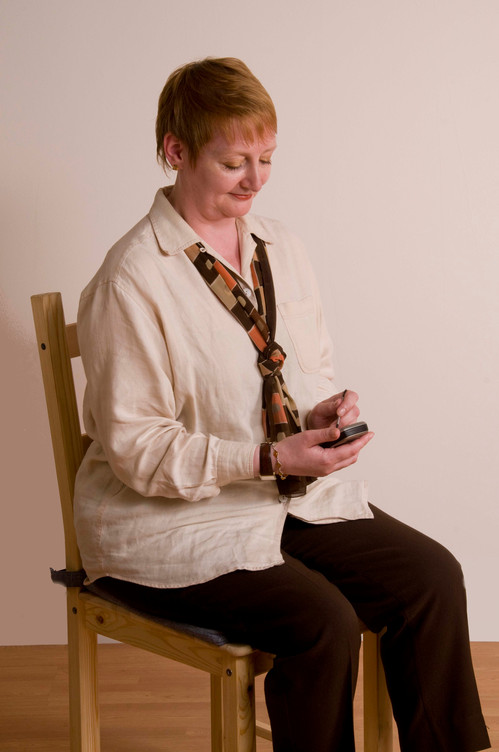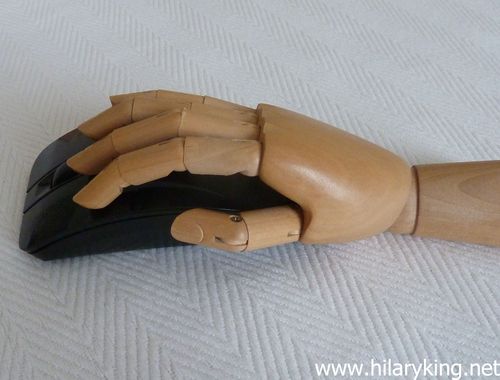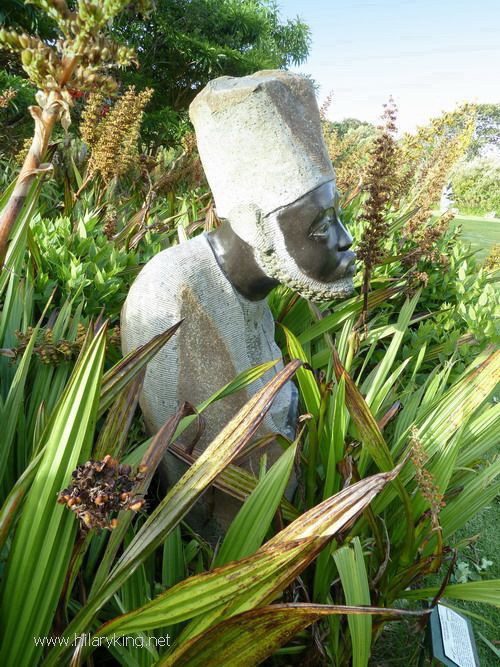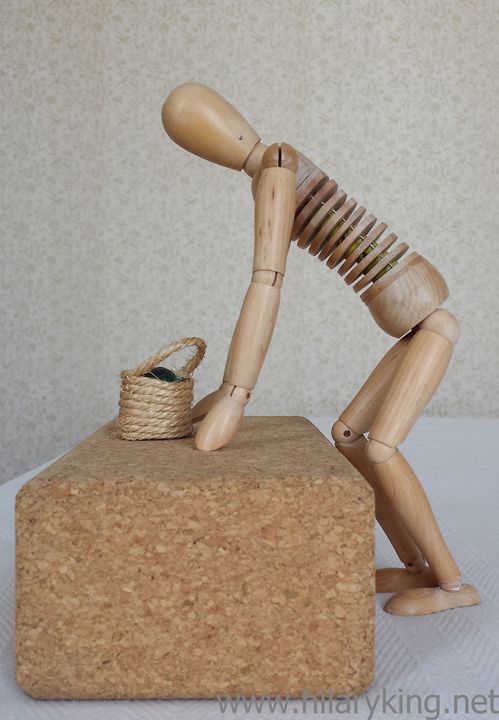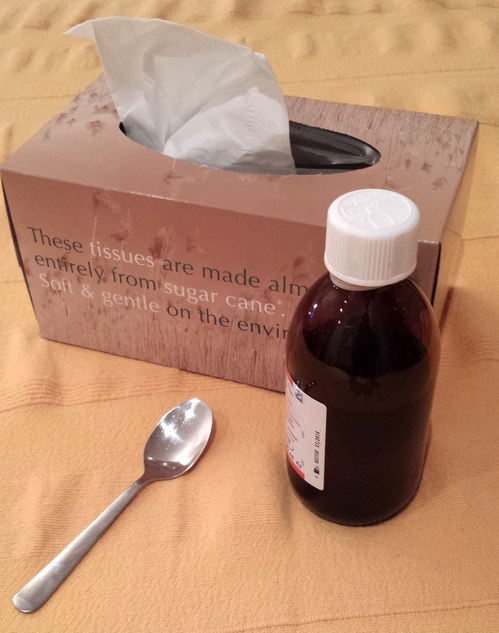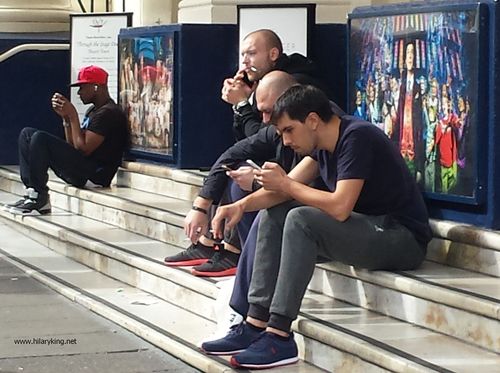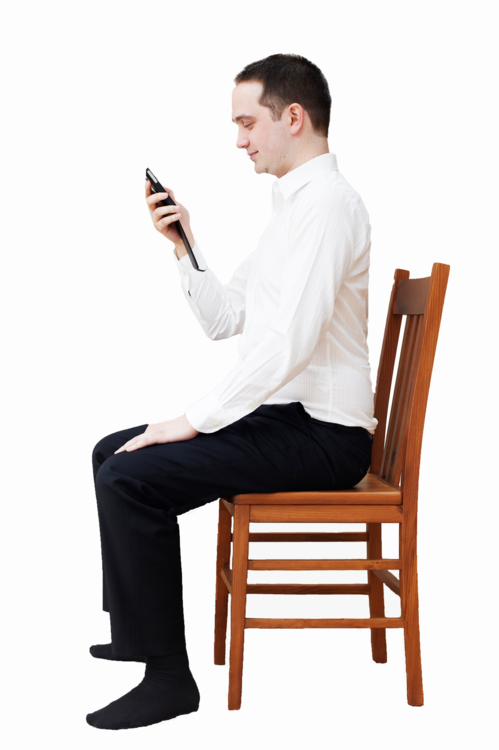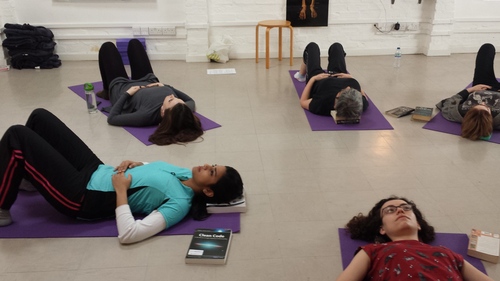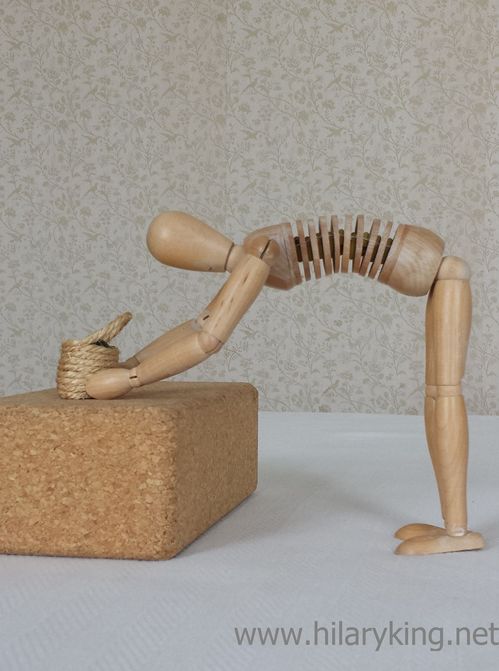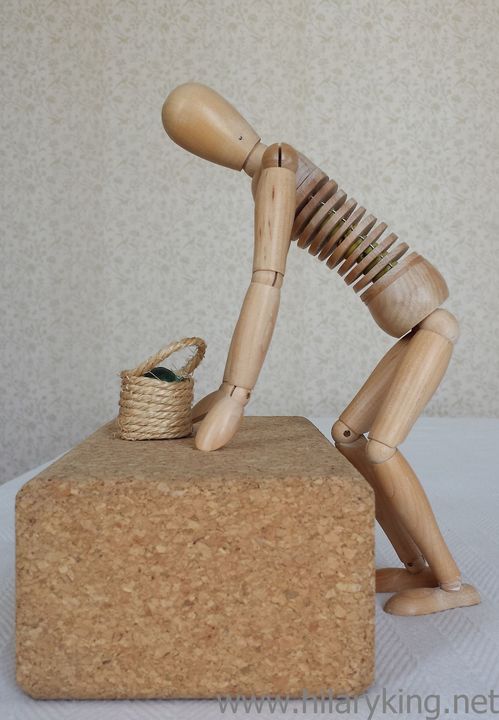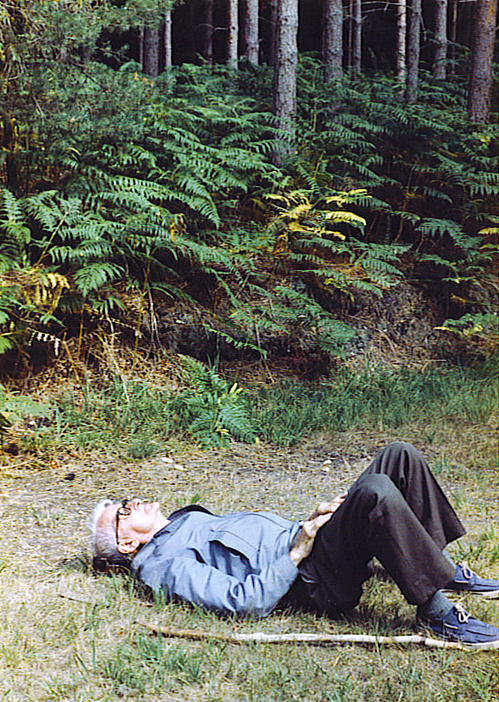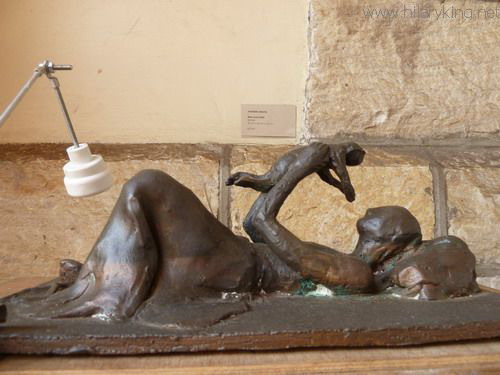Do you spend hours at a time using your smart phone and tablet?
Category Archives: Health
Overwork and Study Pressures Can Harm You
Studying can damage you – if you mis-use yourself
Offices and performances have deadlines and exams get students working long hours. Some people will be damaging their health in the process. This has been understood for a long time. As Mary Wollstonecraft said in A Vindication of the Rights of Woman 1792, ‘People of genius have, very frequently, impaired their constitutions by study or careless inattention to their health’
People still pressure themselves into over-working intensely (in-tense-ly – get it? ) at the expense of their health, whether it is reaching deadlines for the boss, feeling stressed, aiming for high scores in exams, over-practising on a musical instrument, or pushing themselves way beyond their natural limits in dance or sports. The end gaining ‘no pain no gain’ attitude has, unfortunately, led to many injuries over the years, which so often stop the person working or performing altogether. We don’t need to do that. How much better when we pace ourselves and are mindful of how we are using our bodies, particularly under stress.
 Be mindful of your habits and how much tension you put into your mouse hand
Be mindful of your habits and how much tension you put into your mouse hand
Don’t mindlessly ‘Keep going until it’s finished’, without taking breaks
‘The Scholar’ by Tapfuma Gusta
All Work and No Play Makes Jack a Dull Boy
Use the Alexander Technique to Help You Get Stronger
TV’s Trust Me I’m a Doctor – ‘How to get stronger in just a few weeks without going to the gym!’
asked to explore such movements and sometimes this can be a useful thing to do, in order to learn how to avoid habits which could contribute to strains and other problems. I do often work with people to find a way for them to rotate their bodies with greater freedom and flexibility – this is a useful movement to make occasionally if you are desk-bound for several hours – and I have found it helps free me up as I am sitting writing this. Take extra care if you want to include weights whilst rotating, as Mosley suggests! Strenuous twists holding weights could be a quick route through to hurting your back…
Bend Your Knees When You Cough and Sneeze!
One of the main reasons that we can hurt our backs when coughing, is that if we habitually hold ourselves in a fixed manner with contracted, tense back muscles, this tightness will be increased by the strong spasms of coughing and sneezing, which will obviously be more exaggerated if you have a long bout of coughing. The lower back in the lumbar region can be particularly vulnerable and the jolting can jar the spine or strain the muscles, sometimes even damaging an intervertebral disc, causing great pain. There can also be a problem for people with hypermobility, as they can sometimes dislocate their joints if their body gets jolted strongly.
If you have had some AT lessons, you can remind yourself to use a small (and moveable) monkey position when coughing. If we are sitting, we can free the hip joints and let our bodies angle slightly forwards from the hips, so that the torso is freer to move around as it needs to.
Importantly, let the tension go again after coughing and allow your chest to uncurl and open up again. If you forget to do this, the tension and inevitable pulling down that takes place when coughing will just go on building up. If you can lie down in semi-supine afterwards that can help enormously but sometimes it is hard to lie down horizontally if you have a bad cough. In which case, make sure your back (and head?) has good support and spend a few minutes encouraging your chest and back to free up again, just as you would if you were practising the lying down procedure.
The more able you are to have a free neck and back, the more resilient your muscles will be and the more efficient the coughs can be too. Even if you have not had Alexander Lessons, you can help protect your back as you allow your legs, with their moveable hips, knees and ankles, to act as shock absorbers when you cough and work your way back to health.
Avoid Developing Text Neck
Text Neck is Painful – Avoid it!
Symptoms of Text Neck:
- Headaches,
- Neck Pain,
- Upper Back Pain
- Shoulder Pain
- Increased Curvature of the Spine
Our heads are surprisingly heavy
An adult’s head weighs between 10 – 12 lbs, or 4.5 – 5.0 kg. Human heads are heavy!. When I give someone their first Alexander lesson, I often ask them to hold a couple of weights that, together, weigh 8.8 lbs / 4 kgs and I explain that the weights almost certainly weigh less than their heads. Most people are really shocked!
When we have a neutral, upright poise, so that the head balances freely on the top vertebra, we do not notice the weight of the head much. However, when the head and neck are dropped forwards, as in the diagram below, we do begin to notice, and the impact of that big weight increases the more pulled down we are. When someone’s head is dropped forwards to an angle of 60 degrees, the weight seen by the spine is massively increased to 60 lbs. No wonder we begin to get neck, back and shoulder ache! If this misuse and position become a habit, then we begin to damage the cervical spine with an increased curvature, which can get fixed into a very hunched postural position.
Of course this sort of habit can also develop from performing other activities whilst dropping the head forwards and down – for instance when reading books, sewing, performing craft-work or computing – I take care to think about my body use when writing this, so that I avoid contracting down over the keyboard.
Have you thought about how you use your phone?
If you take note of your habits, you may be surprised by the amount of time you hunch down over your cell phone – the average is between 2 – 4 hours per day. Are you reading this Blog on your phone right now? How much tension are you using whilst phoning and texting?
Perhaps mobile phones are more of a problem than other activities, because they get taken around with people all the time and demand our attention incessantly – it is hard to escape them! Often they are work phones, so people can be stressed by being contacted by work when they want to relax, or by having work problems follow them around all day. When we are stressed, we tend to be more tense and contracted and this just exacerbates any problems we may have with the way we use ourselves whilst on the phone. This sort of thing also contributes to RSI.
How Do You Avoid a Painful Neck Developing?
You can probably begin to see that it is worth paying attention to your phone use, because once you are aware of your habits, you can choose to do things differently and begin to avoid building up problems for yourself.
The young man in this photo below demonstrates how we can use the Alexander Technique to be mindful of our body use and be seated in an easy but poised manner. Note how he brings the phone up towards his eyes so that he can read the screen without disturbing the balance of the head on his neck, which is able to remain lengthening in alignment with the rest of his spine. He could also text or play games in this position and could maintain this sort of body use if he were standing.
Sometimes I will work with people whilst they demonstrate how they use their mobile phone, as part of their AT lesson. This can be really helpful, as people often begin to notice habits they were totally unaware of and they are then able to be more mindful about their body use when they are out and about, texting, phoning and playing games.
As one pupil reported after starting AT lessons: “I’m more relaxed and don’t feel so dizzy as before and I have less neck pain”
Discover how to have fun on your phone, without feeling exhausted and achy afterwards!
Caring for the Carers
Caring for the Carers with the Alexander Technique
Lower Back Pain linked to Chimpanzee Spine Shape?
Research Study
Habitual Mis-use
Monkey Position
Nature or Nurture?
Out and About with the Alexander Technique
If you keep being aware of your use during activity and regularly practice the lying down procedure, your body- use is likely to improve and your movements will tend to become more free and easy than they have been for some time. It really can increase your wellbeing, so why not reward yourself.
Some people say that they don’t have time to practice this procedure, which is sad. If they allowed the time to do this regularly, they would realise just how enjoyable it can be useful it is as we unwind and come back to ourselves and they would also see just how much we can learn about ourselves in the process. We often work better afterwards, too.
Standing with Ease
Standing with Ease Using the Alexander Technique
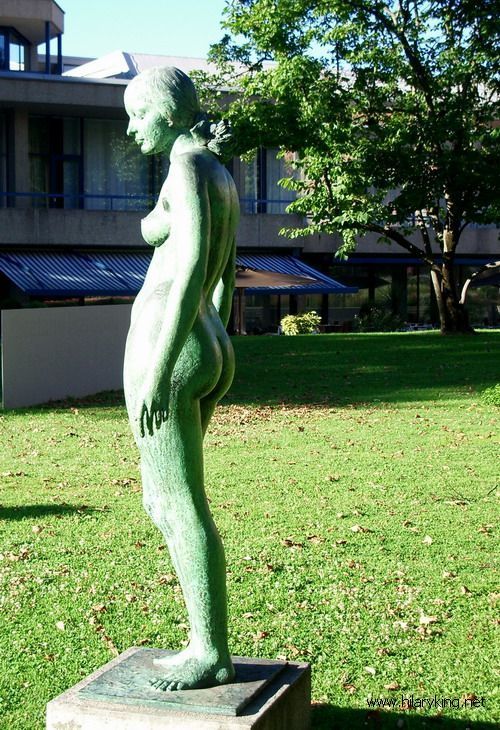
Maria Grazia by Francesco Messina – Lugano
Sinking down on one hip, throws the body off balance
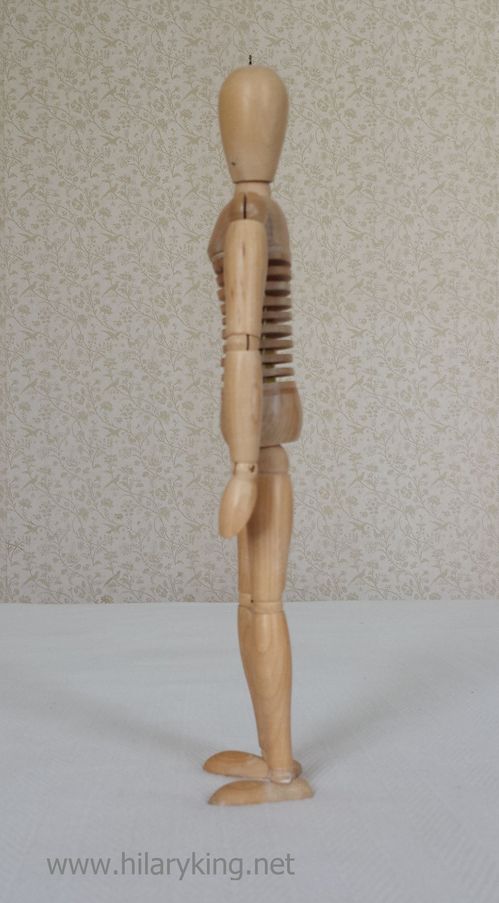
This balanced way of standing and using the body may be seen in the photo of an artist’s wooden model. I had fun trying to make it stand. It could only do so when everything was in alignment and balanced. It underlined for me just how much we as humans pull ourselves and our skeleton off balance with our poor body-use, so that our muscles have to work extra hard in order to let us stand up at all. When we are poised, our muscles work in a coordinated way and we balance more easily.
Alexander Technique for Women ?
Why put on an Alexander Technique Workshop just for women?

